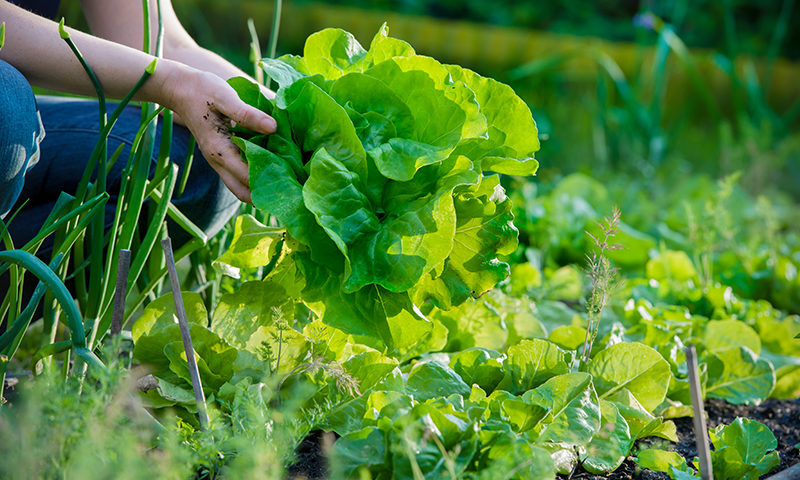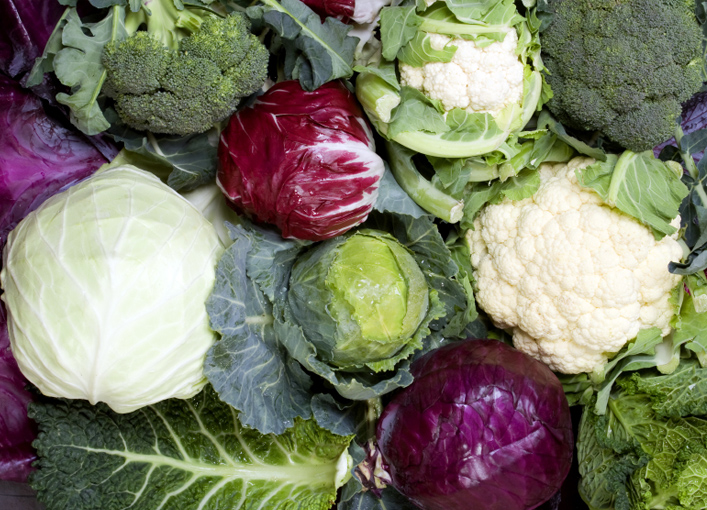Best Vegetables To Plant In Your Garden This Fall

Fall is Here!
You don’t have to stop harvesting fresh vegetables as the days grow shorter. Fall is a great time to plant an Autumn garden and extend the growing season! Many vegetables such as broccoli and cauliflower are of a higher quality when grown in the Fall, while others, like kale, develop better flavor after a frost. Spinach, chard, kale, collards, and even mustard all grow rapidly and flourish towards the end of the season, and loose-leaf lettuces also do very well.
So, what makes Autumn the ideal time to plant? Well, Fall weather allows for excellent root growth before Winter. The warm soil inspires seeds to germinate and your roots to take off. Cool nights and warm days provide the perfect opportunity to plant trees, shrubs, bulbs, perennials, and lawns. As the temperature drops, your plants require less water because it takes the soil longer to dry out. Even better, rainy days during Fall allow you to spend more time in corn mazes and decorating your doorstep instead of watering.
Another added benefit to planting your Fall vegetable garden is that most Fall veggies grow relatively quickly, allowing you to harvest more frequently and reap the benefits of your hard work. Most Fall veggies are also highly nutritious, helping you to eat healthy and save money at the supermarket. Finally, you’ll notice less common pests and weeds interfering, as they tend to disappear towards Fall.
Getting Started
To get your Fall vegetable garden started, first prepare your bed. Begin by immediately pulling out whatever plants have finished producing. Next, spade or till the soil to a depth of 6-8 inches. Then, rake the area lightly and work in a light application of composted manure or 5-10-5 fertilizer to provide adequate nutrition for rapid-growing Fall veggies.
We recommend starting most of your crops from seed, though our stores offer a selection of starter plants for you in early Fall. Spread a mixture of seeds like mustard, and kale. Or, combine seeds of several types of lettuce like curly leaf, red leaf, and oak leaf to allow you to harvest your salad already mixed! It works best to plant greens in blocks or wide rows, since they’re easier to harvest and you’ll have fewer weeds. If you plant blocks each time a new space opens up, you’ll have staggered plantings that can produce over a long time.
Enjoy a full season’s worth of harvesting fresh produce with veggies that mature in roughly 40 days, to some that survive into early Winter, like Spinach and Kale. Plant your radishes, turnips, and arugula as early as September and have them ready to harvest a little over a month later! Broccoli and cauliflower can be planted in late Summer and yield several crops after your initial harvest!

Pro Tips:
Some Autumn vegetable varieties will tolerate cold better than others. Read seed packets before you purchase them to determine what will be best in your area. However, don’t be discouraged by such notations such as chard taking 60 days to mature. The greens are just as good when they’re younger.
In the warmer months of Fall, i.e. late August and September, be sure to water more generously, especially when starting your plants. When starting from seeds, opt for a deeper weekly watering, rather than several lighter waterings throughout the week. Water seeds after sowing and keep the ground evenly moist until the seedlings are up and growing. Seedlings may also need to be sheltered from extreme heat. Protect them by shading them from the sun with fabric until they establish. On the flip side, you can extended your growing season through late Fall by protecting your plants from frost with a tarp, sheet, or other similar covering.
Although insects tend to be less bothersome in late Fall, some vegetables in the cabbage family, including mustard, kale, and collards, may attract cabbage worms. Apply Bt (Bacillus thuringiensis) sprays for an organic method of control. As the plants begin to fill out, thin them enough to allow air to circulate and dry off moisture. This helps prevent insect problems, too.
A Bountiful Harvest
Harvest your fall vegetables as soon as the plants reach edible size. Always wash your produce before consuming to avoid risk of ingesting outside contaminants. Even after the first frosts, you’ll be able to keep harvesting to enjoy the yield of your extended-season garden.
Top Fall Vegetables
- Beets
- Broccoli
- Brussels Sprouts
- Cabbage
- Carrots
- Cauliflower
- Collard Greens
- Kale
- Kohlrabi
- Lettuce (Head & Leaf)
- Mustard
- Onions
- Radishes
- Rutabagas
- Spinach
- Swiss Chard
- Turnips
Visit our stores and explore your options for Cool Season Vegetable Garden Planting! From established plants and seed packets, to fertilizer, containers, and tools, we have everything you need to be successful in the veggie garden this Fall. Ask our Greenhouse team members for their expert advice any time!
